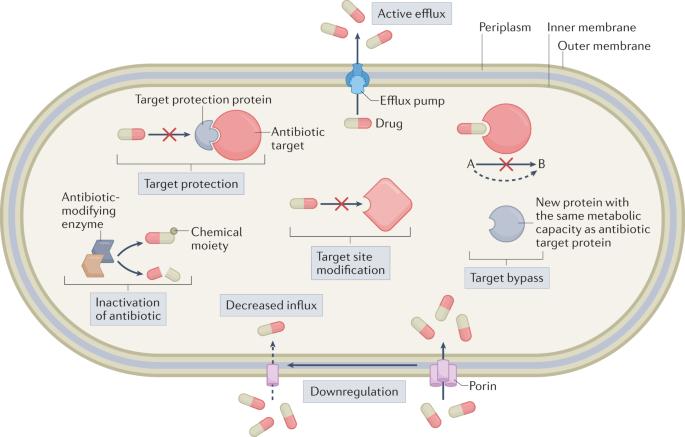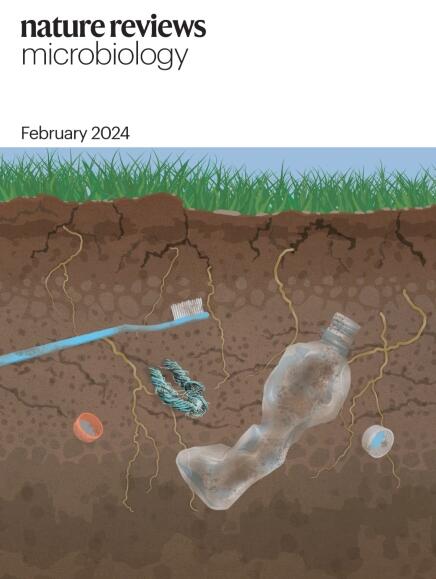Molecular mechanisms of antibiotic resistance revisited
IF 103.3
1区 生物学
Q1 MICROBIOLOGY
引用次数: 106
Abstract
Antibiotic resistance is a global health emergency, with resistance detected to all antibiotics currently in clinical use and only a few novel drugs in the pipeline. Understanding the molecular mechanisms that bacteria use to resist the action of antimicrobials is critical to recognize global patterns of resistance and to improve the use of current drugs, as well as for the design of new drugs less susceptible to resistance development and novel strategies to combat resistance. In this Review, we explore recent advances in understanding how resistance genes contribute to the biology of the host, new structural details of relevant molecular events underpinning resistance, the identification of new resistance gene families and the interactions between different resistance mechanisms. Finally, we discuss how we can use this information to develop the next generation of antimicrobial therapies. In this Review, Blair, Webber and colleagues explore our understanding of the mechanisms of antibiotic resistance, including reduced permeability, antibiotic efflux, modification or alteration of the antibiotic target, modification or destruction of the drug itself, and bypass of metabolic pathways. They also discuss how this information can aid in developing the next generation of antimicrobial therapies.

抗生素耐药性的分子机制再探讨
抗生素耐药性是一个全球性的健康问题,目前临床使用的所有抗生素都发现了耐药性,只有少数新型药物正在研发中。了解细菌抵抗抗菌药作用的分子机制,对于识别全球抗药性模式、改进现有药物的使用以及设计不易产生抗药性的新药和抗击抗药性的新策略至关重要。在本《综述》中,我们将探讨在了解耐药基因如何对宿主生物学产生影响方面的最新进展、支撑耐药性的相关分子事件的新结构细节、新耐药基因家族的鉴定以及不同耐药机制之间的相互作用。最后,我们将讨论如何利用这些信息开发下一代抗菌疗法。在这篇综述中,布莱尔、韦伯及其同事探讨了我们对抗生素耐药性机制的理解,包括渗透性降低、抗生素外流、抗生素靶点的修饰或改变、药物本身的修饰或破坏以及代谢途径的绕过。他们还讨论了这些信息如何有助于开发下一代抗菌疗法。
本文章由计算机程序翻译,如有差异,请以英文原文为准。
求助全文
约1分钟内获得全文
求助全文
来源期刊

Nature Reviews Microbiology
生物-微生物学
CiteScore
74.00
自引率
0.50%
发文量
149
审稿时长
6-12 weeks
期刊介绍:
At Nature Reviews Microbiology, our goal is to become the leading source of reviews and commentaries for the scientific community we cater to. We are dedicated to publishing articles that are not only authoritative but also easily accessible, supplementing them with clear and concise figures, tables, and other visual aids. Our objective is to offer an unparalleled service to authors, referees, and readers, and we continuously strive to maximize the usefulness and impact of each article we publish. With a focus on Reviews, Perspectives, and Comments spanning the entire field of microbiology, our wide scope ensures that the work we feature reaches the widest possible audience.
 求助内容:
求助内容: 应助结果提醒方式:
应助结果提醒方式:


